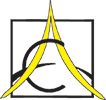Hello everyone!
This is Stephen Torrence, also known as CaptainValor.
In my previous blog post on September 20, 2014 titled as “Push Comes To Shove – Raising Consciousness”, about Stephen Torrence’s personal journey as a signer who created several signed musical videos.
Torrence created numerous videos ‘translating’ musical lyrics using incomprehensible ASL signs. Several people tried to address this issue with him, and Torrence did listen and wrote a very insightful essay, “On the Ethics of “My” Art”.
I contacted Stephen and requested if I could interview with him to share his personal journey with all of us. He graciously accepted this offer. I gave him a list of questions and he took his time to answer each of them.
It is a good opportunity for people who are interested in American Sign Language and want to express their “art”, please read this interview first.
INTERVIEW BEGINS
1. Tell me a bit about yourself, your family and educational background.
I grew up just north of Austin, Texas. My mother independently educated me and my younger sister. I also attended various educational co-operatives in Central Texas leading up to college. I attended Texas University, graduating with degrees in Philosophy and General Studies (ASL, Mathematics, and Physics) in 2010. My whole family and all of my relatives are Hearing.
2. Do you enjoy music and why? (Before being exposed to American Sign Language)
Immensely!
My father introduced me to many musical genres from an early age. I inherited his audiophilia, and in my teenage years, cultivated my own musical tastes. Instrumental music especially seems to stir my emotional core. Thanks to the Spacemusic podcast I developed a strong aesthetic discrimination in the Ambient and Chill genres. When listening to Carbon Based Lifeforms or Solar Fields I feel like a giant squid exploring my vast inner seascape. Lyrical music has its own power, though. It’s one of the strongest ways I empathize with others. Great singer/songwriters — like Andrew Bird or Imogen Heap — let you in so far that you sort of *become* them, intimately experiencing the world as they do, and then returning to your life as if from a vivid dream. Nothing else does that for me quite like music.
3. When was the first time you were exposed to American Sign Language, and how/where did that happen?
In high school, a friend’s mother was in an ITP (both were Hearing). She invited me to a local “Deaf Coffee Chat.” It was such a welcoming environment! I fell was immediately fascinated with signed language, learning as many signs as I could, learning the finger spelled alphabet, etc. This whole style of communication was unlike anything I’d encountered before, and the other Interpreters and Deaf participants encouraged my enthusiasm.
4. With this exposure, what motivates you to take ASL classes at Texas Tech. University? Who were your ASL teachers (deaf or hearing)?
I needed a number of foreign language credits, and I was sick of Spanish. ASL seemed like the most distinctive choice, and I recalled how much it had intrigued me at the Deaf Coffee Chat a couple of years prior, so that’s what I went with. My teachers were different each year — a Hearing woman (who also interpreted classes for the university) for Level 1, a HoH woman for Level 2, and Deaf woman for Level 3 and Deaf Culture. One way that we were assigned to demonstrate our learning was through ASL songs and ASL stories. That’s where I first learned about songsigning.
5. While you saw the examples of people songsigning – what was your first reaction? How is this different from your love of music, and why is this experience enhances your experience with music?
Songsigning struck me as a superbly distinct art form, situated smack dab at my aesthetic sweet spot. I’ve always been fascinated by the visualization of sound, and especially by synesthesia (the “crossing of wires” between senses, like seeing tastes or hearing shapes). I love exploring the fuzziness of the boundaries between the senses and mediums that most people consider distinct.
The way I understood it, songsigning doesn’t just involve the translation of words and the interpretation of concepts from one language to another, much as one might translate an opera from Russian into Italian. It also requires the interpretation of musical elements into body movements, and musical and lyrical emotions into facial expressions. An artist can then “layer” these visual interpretations onto the original aural work. Adding these rich visual dimensions to a song struck me as a highly novel “synesthetic” experience — seeing and hearing the music all at once — a whole greater than the sum of the parts, astoundingly engaging and emotionally compelling for me as a Hearing person.
6. How long have you doing these videos and did anyone ever approached you with their concerns at the beginning of your project?
I produced many ASL music videos in 2009 and a few in early 2010, then produced more this summer. In my “early phase,” no one really approached me with concerns. I think that was because I was a student and it was more understood that I was doing it as a hobby. But when I started on Patreon in July, a couple of folks involved with the Deaf community did caution me, and in hindsight, I should’ve given them more consideration. The quantity and intensity of feedback I received after Paul & Tina’s controversy in September affected me much more strongly. Thanks to that I recognized this issue went broader than a few individuals, and that I should give it much more consideration.
7. In last few weeks, you may have received a lot of comments from the Deaf Community about your signing skills and concerns about your working with Patreon. What were your initial thoughts?
I was stunned at first. Many of the comments were very hateful, and hate is always tough, no matter who it comes from. Initially, I wanted to react and defend myself. But I’ve noticed that hate coming from someone who doesn’t know you usually isn’t directed at you. It’s directed at how they perceive you, and it’s grounded in something deeper. That’s why I chose to wait, do a lot of research, and then respond.
8. Why did this article, ” Appropriate Method of Appropriation” written by a deaf person was a pivotal moment for you?
Elise’s article helped me connect this case to some huge dynamics in our society. I consider myself a feminist, and I support the ongoing efforts of other feminists to draw attention to marginalization, disenfranchisement, and the subtle forms that they take in modern society. Oftentimes we in the majority, in a position of privilege and power, unknowingly oppress those who are not. To become aware of this, it takes someone from minority “speaking up” and expressing what that feels like, but it also takes us in the privileged majority being willing to listen. I think I was receptive to Elise’s message because it resonated with those of feminist poets and writers I’d encountered and supported in the Hearing world.
9. What did you learn when you researched about appropriation, majority and minority culture, and Deaf History. What struck you the most?
I was most impacted by comments about how Hearing people like me were “watering down” ASL through our intent to “spread awareness.” There’s this situation called the “White Knight,” where someone in the privileged majority believes they are “helping” those in the minority through their actions, when in fact they are usually worsening the situation. The White Knight decides what’s “best” for the minority instead of asking them what they want or need. The minority’s actual wishes go unheard or under-emphasized, and the injustices continue.
Hearing people who assume the Deaf community needs or wants them to spread ASL are being White Knights. I believe the Deaf community should decide who their liaisons are, and what they want to say to the Hearing world. There are plenty of Deaf, HoH, and CODA ambassadors who are doing a fine job of spreading ASL and raising awareness for Deaf issues. I think the best thing for Hearing people like myself to do is to stand aside and let those “voices” be “heard.” And when Hearing people approach us first with questions (as they often do, because cultural biases persist), we should respectfully direct their attention to the Deaf community’s elected liaisons instead of speaking for them.
10. What motivates you to write this insightful essay and were you anticipating some kind of reaction from the community?
I needed to reply somehow, and since I have a degree in Philosophy I’m experienced at writing long articles (haha). I didn’t know how the Deaf community would react, but I hoped it would be accepting and positive, and it certainly has been.
11. After receiving reaction from the Deaf Community , how did you feel?
The many grateful comments and emails I received made me feel even more confident about my decision. This was the right thing to do.
12. What kind of advice do you have for other hearing people who are signers or sign language interpreters who are doing the same thing as you are doing? If they don’t take your advice, what kind of approach would you do to make them understand your point?
I see lots of Hearing folks doing ASL songs who have good intentions. But I see some of them making the “White Knight” mistake I spoke about earlier. That’s so dangerous, because they can sincerely feel that they’re doing something beneficial, when in fact they are perpetuating this insidious form of oppression. One of the reasons my mistake was so hard to see was because of all the Hearing fans who were sending me positive feedback. But the real stakeholders in this issue are those in the Deaf community. ASL is Deaf culture, and it seems clear to me now that who shares it and how it gets shared should be up to the Deaf community alone. If Hearing entertainers believe otherwise, that’s of course their decision, and it’s not illegal. I just hope they appreciate that such a decision has significant moral and cultural consequences.
13. With this whole experience, what was the most valuable lesson did you learn?
Empathy cuts through everything. At the end of the day we’re all human, we want to be treated fairly, and we should want to do that for others.
14. Would you be interested to be immersed with vibrant Austin Deaf and ASL Community?
I definitely would like to get more involved. As I learn and grow thanks to this whole situation, I am becoming more aware of Deaf issues in general than I ever was before. The “known unknowns” are unfolding before me, and I feel like such a beginner! It’s like a fog has cleared and I can see I’m in an ocean rather than a pond. I’d love to find someone here in Austin willing to help me row a little farther. 🙂
INTERVIEW ENDS
Thank you so much Stephen. I cannot express how much I appreciate your time and willingness to share your thoughts with all of us.
You are more than welcome to be a part of the Deaf and ASL Community!
Warmly,
Amy Cohen Efron


3 comments on “Interview with Stephen Torrence (CaptainValor)”
Anne Marie
I cannot think of anything more to respond but say it is well done. Thanks to both of you.
Anne Marie
Tim Monigan
THANK YOU for your insightful article. Also outstanding discussion between both of you. Again, thank you for u der standing our Deaf Culture.
Tracey Milo
That was a great article! Stephen took a huge courageous to own up his mistakes. That’s say a lot of his character, as a man with genuine heart. The entire Deaf community welcomes you, unconditionally love and honest. Well done, Amy Cohen. Thanks for brighten up our Sunday reading